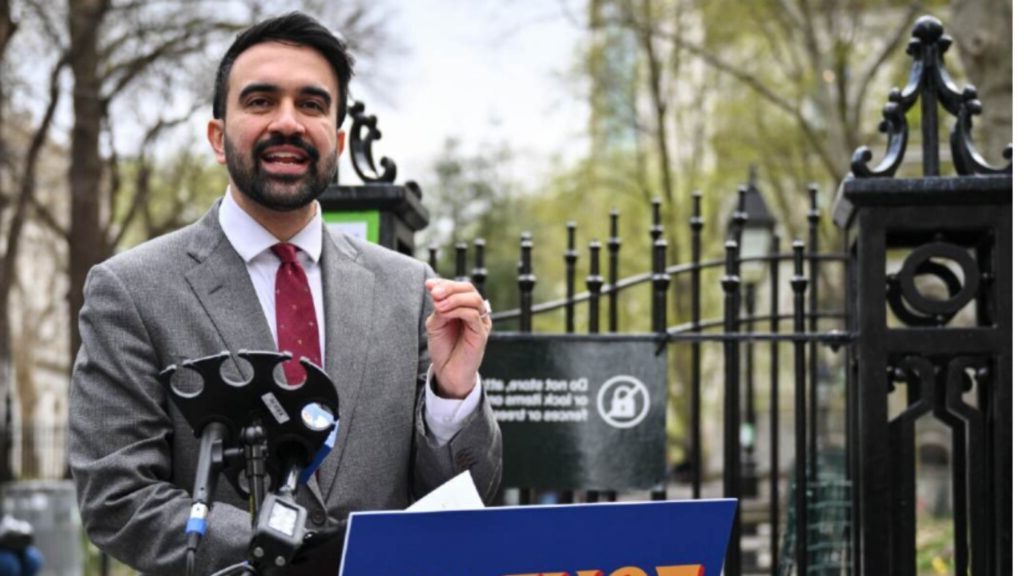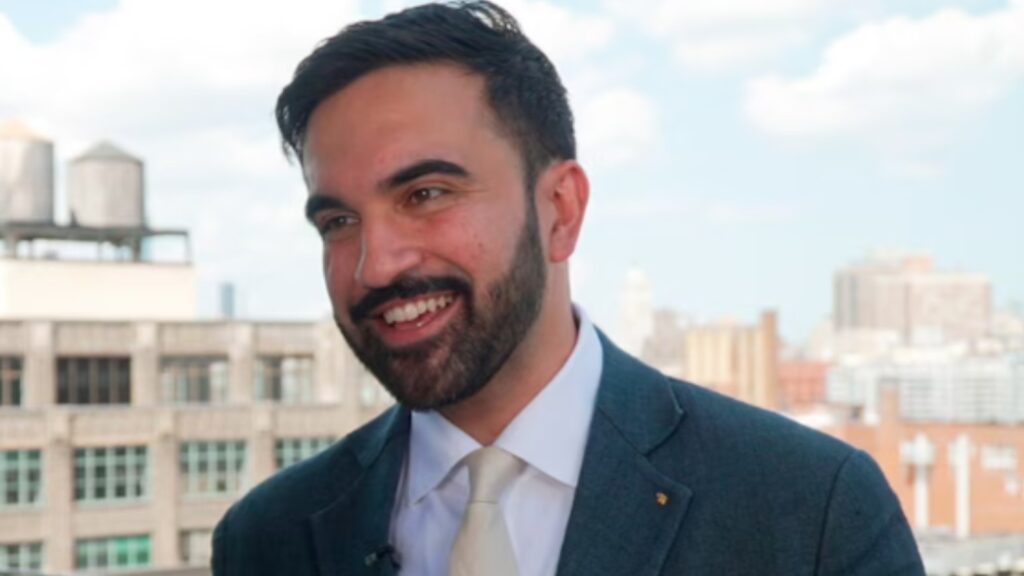Zohran Mamdani’s Controversial Tax Plan for NYC: The Debate on Race and Fairness in Property Taxation
Zohran Mamdani’s controversial tax proposal targeting wealthy, predominantly white neighborhoods in New York City has sparked outrage and debate over fairness, racial discrimination, and economic redistribution. Explore the details of the tax plan and its political and legal implications in this blog.
Zohran Mamdani’s Controversial Tax Plan : The Tax Plan That’s Shaking Up New York Politics
New York City’s mayoral race has taken an unexpected turn, with Democratic nominee Zohran Mamdani’s controversial property tax proposal sparking outrage and debate. His plan to redistribute the city’s property tax burden based on race and neighborhood wealth has caught the attention of voters, legal experts, and political analysts alike. The debate surrounding this proposal raises important questions about fairness, racial equality, and government intervention in economic redistribution.
In this blog post, we’ll take a closer look at Zohran Mamdani’s tax plan, explore the controversy surrounding it, and analyze the broader implications for New York City’s future.
Understanding Zohran Mamdani’s Property Tax Proposal
Zohran Mamdani, a Democratic socialist running for mayor of New York City, has introduced a tax plan that seeks to correct what he sees as systemic inequities in the city’s property tax system. The proposal’s core idea is to “shift the tax burden” from the outer boroughs—areas that are predominantly Black and Latino—to wealthier and whiter neighborhoods in places like Manhattan and Brooklyn.
The plan would lower property tax assessments for homeowners in lower-income, predominantly minority areas like Jamaica and Brownsville while raising taxes in affluent neighborhoods that are primarily white. Mamdani argues that this would address the economic disparities where wealthier areas have historically paid lower taxes compared to poorer regions.
Key Features of Mamdani’s Tax Plan:
- Tax Reductions for Underprivileged Areas: Lowering property tax burdens in economically disadvantaged areas.
- Higher Taxes in Wealthy, Predominantly White Areas: Raising taxes in neighborhoods like Manhattan’s Upper East Side, parts of Brooklyn, and affluent areas of Queens.
- Systemic Inequality Focus: The aim is to create a fairer system of taxation that helps reduce racial and economic disparities in the city.
Why the Proposal Is Sparking Outrage
While Mamdani’s supporters argue that this is a step toward economic justice, the plan has ignited a firestorm of criticism. The primary concern is that the policy uses racial and geographic factors as a basis for taxation, which opponents argue is discriminatory. Legal experts have weighed in, with some calling it racially biased and unconstitutional.
Several political figures, including Harmeet Dhillon, Assistant Attorney General for Civil Rights, have raised concerns about the legality of such a plan. Dhillon has even suggested that the U.S. Department of Justice could investigate the policy for racial discrimination, which is prohibited under federal law.
Critics’ Arguments:
- Racial Discrimination: Using race as a determining factor in tax policy could lead to accusations of institutional racism.
- Potential Legal Issues: Many argue that this plan could be seen as unconstitutional and subject to legal challenges.
- Negative Economic Impact: The New York Post has warned that such a plan could lead to a mass exodus from the city, with wealthy residents fleeing areas that face tax hikes, further straining the city’s economic landscape.
Despite these concerns, Mamdani has defended his proposal, arguing that it’s not racially motivated but a necessary step to correct systemic inequalities that have long favored wealthy neighborhoods.
The Legal and Social Implications of the Tax Plan
Mamdani’s tax proposal is much more than a simple tax reform; it raises questions about the role of government in addressing economic disparities. Can race-based policies be effective tools for redistribution? Should cities use tax policy to actively correct imbalances created by historical racism? These questions are at the heart of the debate.
Legal Concerns
The U.S. legal system has stringent rules against racial discrimination. Mamdani’s plan could face significant legal hurdles if challenged in court. According to critics, any attempt to impose higher taxes based on race or geographic location might violate the Equal Protection Clause of the 14th Amendment, which guarantees equal treatment under the law.
Social and Economic Divisions
Some argue that the plan could exacerbate social divisions, fueling further resentment between racial groups. By focusing on race and wealth, critics suggest that this proposal might deepen the divides it seeks to heal, making it harder to bring about the long-term economic harmony Mamdani envisions.
Political Fallout: Will It Affect Zohran Mamdani’s Mayoral Bid?
Despite the backlash, Mamdani has stood firm, maintaining that his proposal is necessary to address inequality in New York City. His bold stance has earned him support from a portion of the progressive electorate who see this as a step toward a fairer city. However, the plan has alienated others, especially centrist voters who fear the long-term economic effects and potential legal ramifications.
Mamdani’s primary victory has made him a formidable contender in the race for mayor, but the controversy surrounding his tax plan could play a pivotal role in the upcoming election. The 2025 mayoral race is shaping up to be a battle over how to balance social justice with economic pragmatism, and Mamdani’s tax plan is at the center of this debate.
The Future of NYC Tax Policy: Can Race-Based Taxation Be the Solution?
As New York City continues to grapple with housing affordability, economic inequality, and racial disparities, Mamdani’s proposal offers a radical solution that has prompted strong reactions from both supporters and detractors. Whether or not his plan becomes law, it underscores the growing divide over how best to address systemic inequalities.
In the coming months, we can expect more discussions on how to reform the city’s tax system in a way that is both fair and effective. Mamdani’s plan may not be the final answer, but it has certainly ignited an important conversation on how to balance social justice with the economic realities of running a city as complex as New York.
What’s Next for Zohran Mamdani?
Zohran Mamdani’s tax proposal has sparked heated debate, and the fallout will likely influence his political career in the coming months. As he continues to stand by his plan, his position on race and fairness in taxation will be a defining issue in the mayoral election. Whether his ideas will resonate with New York voters remains to be seen, but this bold proposal has certainly made him one of the most talked-about figures in New York politics.
Let me know if you’d like more details on this topic or if you need further information!
Zohran Mamdani’s 17-Point Lead With Jewish Voters in NYC Mayoral Race: A Shift in Political Landscape –






